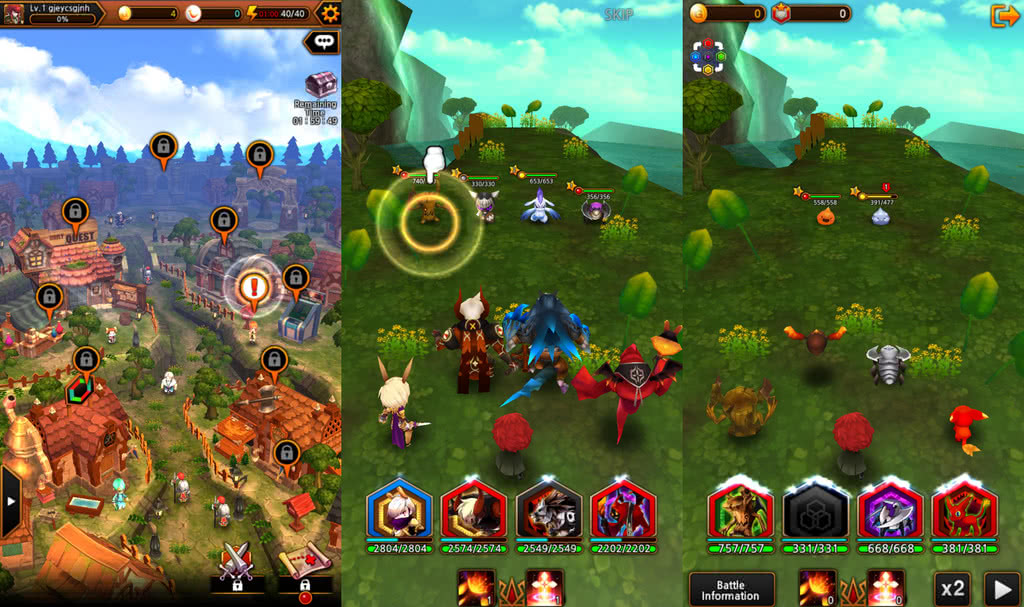In a world inhabited by both humans and monsters, Hexmon War puts players in the shoes of a beginner trainer. You’re initially supplied with four Hexmons – the maximum number you can have in your team at one time. Using only these to begin with, your missions is to defeat whichever creatures lie in the dungeons ahead. Combat consists of one normal move and one special move per Hexmon, as well as a special move by the trainer themselves, and the health of each monster and the damage each attack causes is shown by numbers. Your enemies generally attack together, so you’ll be battling two, three, four, or more at the same time. In some dungeons, defeating these will mean the dungeon is complete, whereas others – particularly further on in the game – have different areas hosting more enemies. Once the dungeon is complete you’re awarded items (more on these later), experience points to level your own character up, and the creatures you defeated, meaning you’re now able to return to your home town and manage your team of Hexmons.
There are eight dungeons in total with eight stages in each, but there are other game modes to play. A different dungeon quest appears daily, and usually consists of a local member of the town asking you to defeat a giant Hexmon for a reward. Once your character reaches a certain level, Piece Dungeons also become available. In Piece Dungeons the aim is to defeat a Hexmon boss, and if successful they’ll drop pieces of themselves. Using these, you can craft your own, powerful Hexmon for your own team – this only becomes available later on in the game, though. Even further along, when the much higher levels are reached, Raids and Duels are unlocked, which are ways gaining strong loot and battling your team against other players’.
When successful, each dungeon will reward you with gold coins. These are essential to your progress, as they allow you to level up and upgrade your Hexmon team. Sometimes bosses and dungeons leave other loot also, such a special stones which allow you to raise your Hexmon’s class altogether, a much more effective way of making it more powerful. Another way of gaining both of these items is by purchasing loot crates or a certain number of gold coins with Banacash, the game’s in-game currency. The only way of receiving Banacash, however, is by paying with actual money.[sc name=”quote” text=”Hexmon War is, at its bare bones, a game of tactics: lay down your strongest cards to beat the opponents”]
Hexmon War can seem like a shallow imitation of other handheld Japanese role-playing games: the dungeons only really consist of the character auto-running to the enemy monsters, they all have very similar backgrounds, and there are only two moves each Hexmon can use. Yet even with this lack of control over the gameplay compared with the adventures of the Pokémon series, Hexmon War somehow works. When you strip everything back, it almost plays like a card game: all the player needs to do is decide on a team of four, see it through battles, and then use the winnings to level the characters up. Rather than including the exploration and adventure of the aforementioned games, Hexmon War is, at its bare bones, a game of tactics: lay down your strongest cards to beat the opponents. This puts the focus entirely on what matters: building your best team of Hexmon. Even if it did include some form of movement, it would have been too complicated for a game made for this size.
Hexmon War isn’t without its faults: it can sometimes glitch when you leave it for too long, and often takes a while to load. Yet, knowing its place as a smartphone game, it took what it could from other JRPGs – characters, combat mechanics, levelling up – and left out what couldn’t fit in. In recognising the limitations, the developer’s created a better game.













